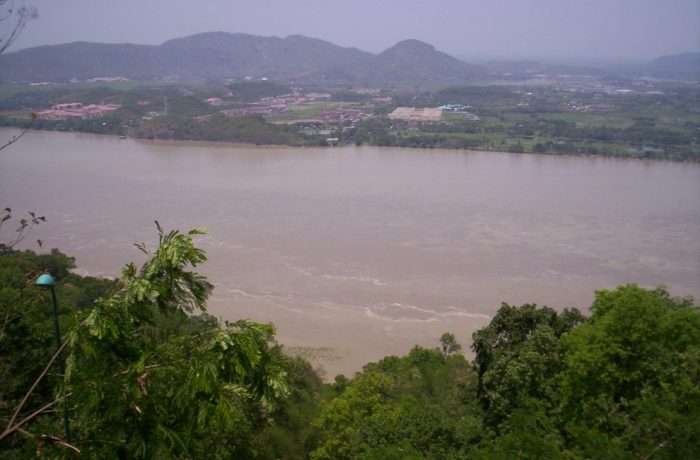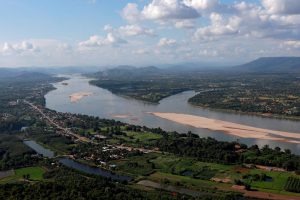India says it will be forced to build a 10 gigawatt hydropower project in the remote eastern state of Arunachal Pradesh, if China goes ahead with its plan to build a major hydro project in the Tibetan stretch of the Brahmaputra River.
China could build up to 60 GW of hydropower capacity on the Tibetan section of the Brahmaputra, a Reuters report said, citing China’s state media.
The river, known as the Yarlung Tsangbo in China, flows for 3,000 kilometres from Tibet into India’s Arunachal Pradesh state and down through Assam to Bangladesh.
Indian authorities are concerned Chinese projects could trigger flash floods or create water scarcity.
“The need of the hour is to have a big dam in Arunachal Pradesh to mitigate the adverse impact of the Chinese dam projects,” TS Mehra, a senior official in India’s federal water ministry, said.
The proposal is under consideration at the highest level in the government, the official said, adding the Indian plan would create a large water storage capacity to offset the impact of Chinese dams on the river’s flow.
New Delhi has told Beijing that any project China undertakes should not cause an adverse impact on India. China has given an assurance, but New Delhi is unsure how long that assurance will last, Mehra said.
Another flashpoint?
The Brahmaputra is crucial for India as its basin is a critical water source for five regions – Arunachal Pradesh, Assam, Meghalaya, Sikkim, Nagaland and West Bengal.
The Brahmaputra valley supports several indigenous communities. And Bangladesh also has rights to the waters of the trans-border river under international law.
In Bangladesh, Sheikh Rokon, secretary general of environmental campaigners Riverine People, expressed concern and said multilateral discussions should be held before China builds any dams.
“China’s downstream neighbours have a legitimate cause for concern. Water flow will be disrupted,” he said.
Diplomatic relations between India and China are at a nadir, with troops locked in a border face-off in the western Himalayas for months.
Some analysts fear that damming the Brahmaputra could potentially develop into another flashpoint, as Beijing’s dam building activities move closer to the Indian border.
“India is facing China’s terrestrial aggression in the Himalayas, maritime encroachments on its backyard and, as the latest news is a reminder, even water wars,” Brahma Chellaney, a specialist on India-China ties, said in a tweet.
Murdering the Mekong
Hydro projects on Asia’s great rivers have been a growing source of regional tensions in recent years. In Southeast Asia, China has been accused of acting selfishly by building a series of dams on the upper reaches of the Mekong, which is known as the Lancang in China.
China’s dams on the Lancang/Upper Mekong have hammered riverside communities in downstream countries such as Thailand, Cambodia and Vietnam, where millions rely on fishing.
The cumulative impact of China’s dams on the upper reaches and dams built by Laos and Thailand on the midstream reduced the mighty Mekong to a pitiful level in recent years and the “miracle of the Mekong“, in which the river reverses its flow into the great Tonle Sap lake in northern Cambodia was disrupted again this year.
Beijing denies it has worsened droughts in the lower Mekong basin, but groups such as International Rivers say that China’s attitude towards countries downstream is dismissive and has created ill-feeling among riverside communities all the way down to the delta.
Meanwhile, Laos’ grand plan to become the ‘Battery of Southeast Asia’ by damming the many rivers that cross its territory, has amplified the impacts which ecologists say have strangled the life out of a once magnificent free-flowing river.
For India, there is concern that the Chinese might built a dam around the “great bend”, where the Yarlung curves southward before entering India, which is where the river gains a substantial volume of water, Sayanangshu Modak, a researcher at the New-Delhi based Observer Research Foundation think-tank, said.
This region is also geologically unstable, making potential dam construction challenging, Modak added.
Unparalleled in history
But for China, this is a historic opportunity too.
“China will implement the hydroelectric project downstream of the Yarlung Zangbo river in the 14th Five-Year Plan (2021-25) and its long-term goals through 2035 made by the Central Committee of the Communist Party of China,” said Yan Zhiyong, the chairman of Power Construction Corp of China (Powerchina), tasked with the construction of the project, according to government mouthpiece the Global Times.
“There is no parallel in history. it will be a historic opportunity for the Chinese hydropower industry,” Yan told a conference to celebrate the 40th anniversary of the founding of the China Society for Hydropower Engineering.
The project could also serve to maintain water resources and domestic security, he added.
That aside, according to Yan, the hydropower exploitation of the river downstream is not just any hydropower project as it will have an effect on the environment, national security, living standards, energy and international cooperation.
The new hydropower station could generate income of 20 billion yuan ($3 billion) annually for the Tibet Autonomous Region as well, he said.
• Indrajit Basu and Jim Pollard, with Reuters
This page was upgraded on January 19, 2022 for style purposes.
READ MORE:
China warns of ‘critical 10 days’ for flooding
China bid to boost GDP with $142 bn of water projects






















